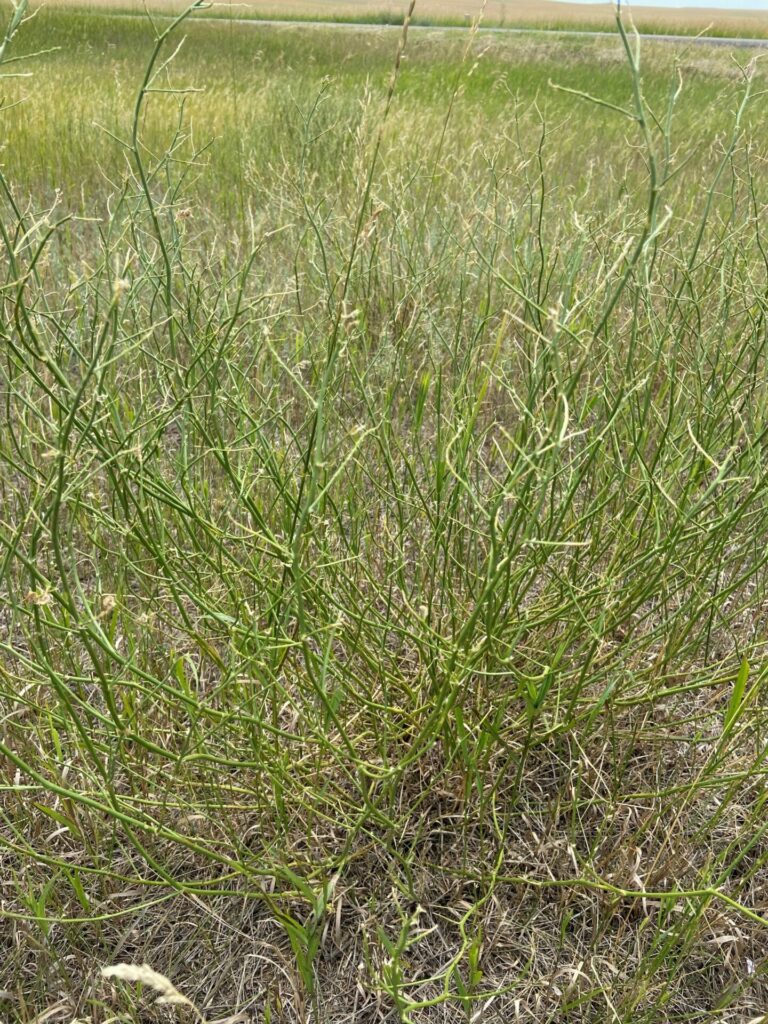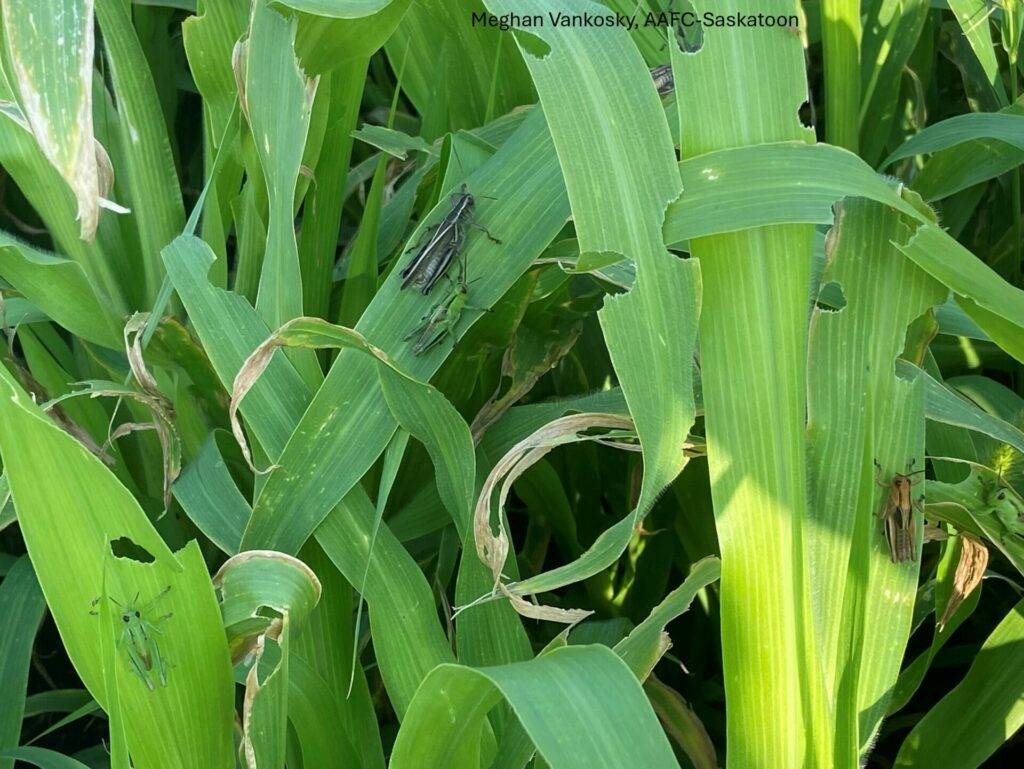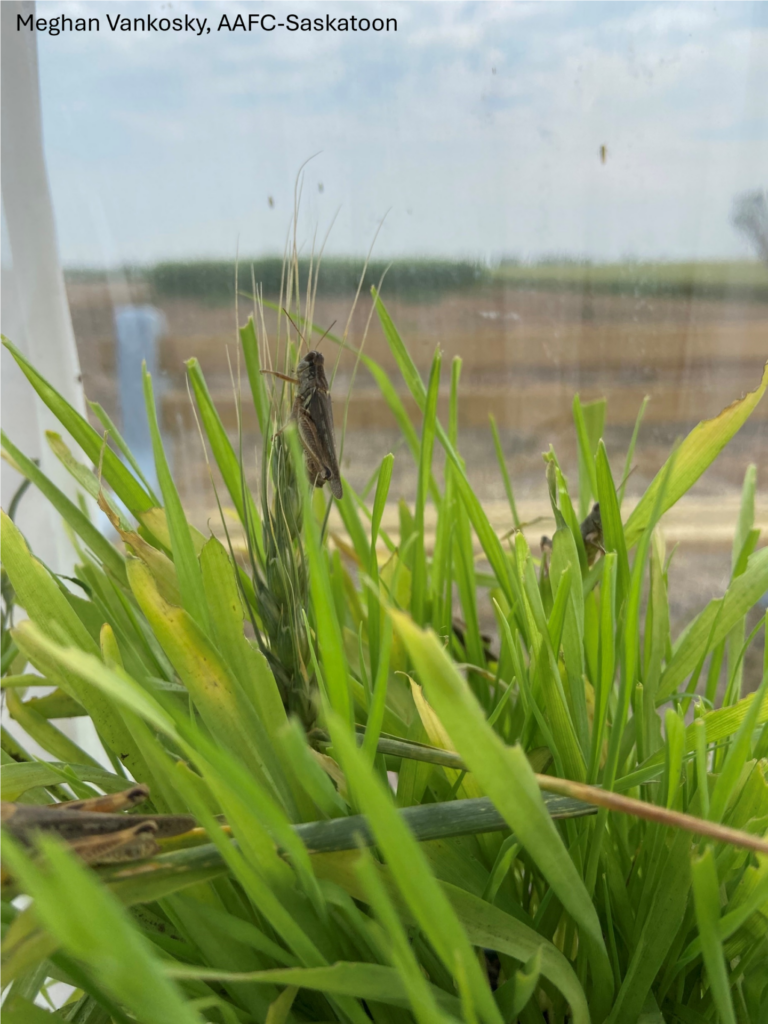Grasshoppers have mouthparts designed for chewing. Grasshopper nymphs and adults efficiently consume host plant foliage using their chewing mouthparts. During serious outbreaks, grasshoppers can strip all leafy material off the host plant stems and can also be found eating the leaves on shrubs and trees.

Feeding damage caused by first and second grasshopper instars is less obvious than the damage caused by more mature nymphs and adults, simply because of their differences in size. As a result, the economic threshold used to make management decisions for grasshoppers can change as grasshopper populations mature. Dr. James Tansey has compiled economic thresholds for grasshoppers of different stages attacking different crops.

The four primary pest grasshopper species differ slightly in terms of their preferred hosts. For example, the clearwinged grasshopper (Camnula pellucida) prefers cereals and some succulent grasses, but tends to avoid broad-leaf species. The two-striped grasshopper tends to show a preference for more ‘lush’ hosts, including broad-leaf species like alfalfa and various pulse crops, as well as cereals and grasses.
The migratory grasshopper has a wide host range and can clip pods and grain heads on maturing crops to find green tissues to eat.

Scout for grasshopper nymphs along roadsides, especially in south-facing ditches, and along field edges using the protocol developed by Prairie Pest Monitoring Network team members and collaborators. Keep in mind that earlier instar nymphs are easier to manage than late instar nymphs and adults. Information is available online about the lifecycle, damage, monitoring, and economic thresholds for pest grasshoppers, including the grasshopper pages in Field Crop and Forage Pests and their Natural Enemies in Western Canada: Identification and management field guide (also available in French from our Field Guides page).
